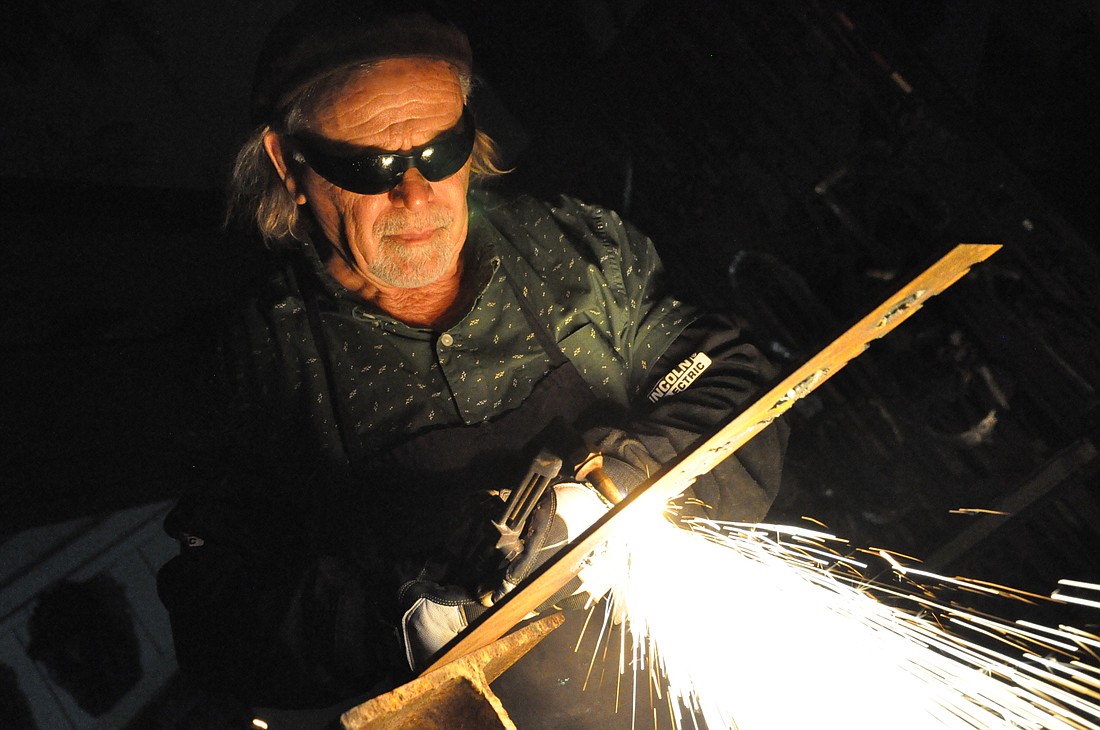- April 25, 2024
-
-
Loading

Loading

David Cumbie calls it a “metamorphosis” — the way bronze, concrete and steel can tell a story once melted together. Clay is carefully sculpted, replicated with a mold and than filled with melted bronze to create an enduring likeness. Steel is cut down and reattached with a blowtorch, creating the armature that makes a statue stand upright for all to see.
From Cumbie’s studio at the Crealdé School of Art in Winter Park, the lifelong artist turns his ideas into reality — and passes on the skills to students so they can do the same.
The art instructor and Chuluota resident has been teaching at Crealdé for about 37 years, giving classes on everything from clay sculpture and bronze casting to welding and mold-making.
Using a combination of those disciplines, students have created animal sculptures, figures of people, masks, wall pieces, kinetic sculptures, and practical items such as coffee tables and lamp stands.
“You work on it until you get it right,” Cumbie said. “It’s a challenge — especially with something like art where you don’t aways know what the end result’s going to be. You’re in the creative process. It’s like an adventure.”
Cumbie has used bronze casting, sculpting and welding techniques to create outdoor multimedia sculptures, which have been displayed at Epcot and Orlando City Hall, among many other places.
It was his desire to build standing sculptures outside that drove him to pursue welding, which helps bring a piece together and come to life.
“When I decided to go outdoors building big things, I needed to weld a structure to support the pieces,” Cumbie said. “It’s multimedia, and welding is part of it. It enables me to combine all the other materials.”
Case in point: a 14-foot-tall bronze sculpture that stands in Fort Pierce. The piece almost resembles a totem pole, made up of bronze slabs with images and faces all held together with a welded metal beam. The whole thing is assembled together in pieces, but it all weighs about two-and-a-half tons, Cumbie said.
“I start, and it just goes from one image to the other,” Cumbie said. “Some of it is symbolic.”
Welding sometimes even takes the center stage, with some sculptures completely made of connected steel, Cumbie said.
“I just recently showed a series of welded trees at an exhibit,” Cumbie said. “I have a lot of fun with it.”
Cumbie has been interested in art for as long as he can remember. At age 5, he was given pencils and paper to draw with by his two older sisters. Cumbie was introduced to the craft of cutting steel with a blowtorch reaching 3,000 degrees Fahrenheit by his father, who worked in machine manufacturing.
“For me, (art) is a way of life,” Cumbie said. “The whole creative process is a frame of mind that I like to stay involved with as much as I can.”
Cumbie teaches welding at various workshops open for enrollment, and students can learn the basics of lighting the blowtorch, cutting steel and creating their own sculptures.
Crealdé students recently gained access to a new art form a few weeks ago: blacksmithing, which Cumbie said will hopefully be expanded in the next year.